The History
The Holy Chalice of the Last Supper
The Traditionof the First Centuries
Tradition tells us that it is the same cup used by the Lord at the Last Supper for the institution of the Eucharist.
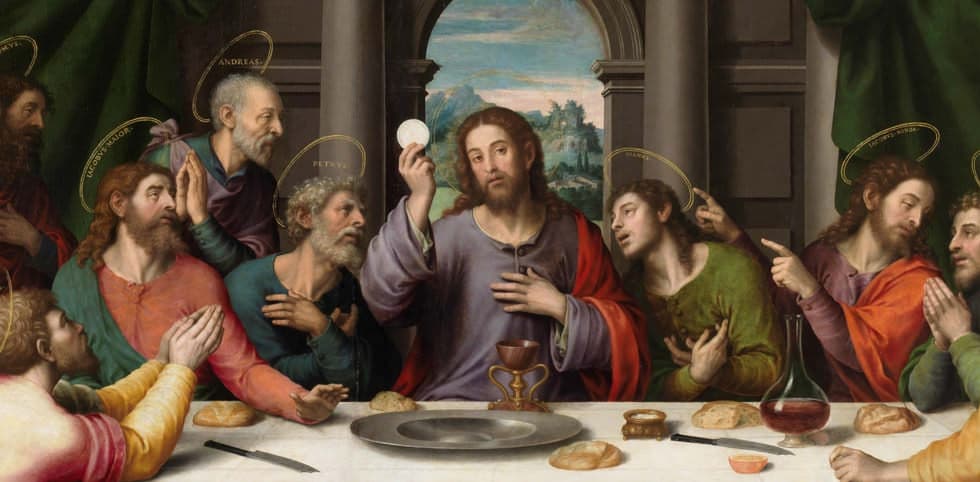
Detail from «The Last Supper», oil on panel, Juan de Juanes, 16th century.
The Chalice was brought to Rome by St. Peter and kept by his successor Popes until St. Sixtus II.
This permanence of the Holy Chalice in Rome is recommended by the phrase of the Roman Canon mentioned above: “I take this glorious Chalice”, hoc praeclarum calicem. An admiring expression that we do not find in other ancient anaphoras, and we cannot forget that the Roman Eucharistic prayer is the Latin version of another in the Greek language, since this was the proper one of the Church of Rome until Pope St. Damasus in the 5th century.
To save the Holy Chalice from the persecution of Emperor Valerian, Saint Sixtus II, through the mediation of his deacon Saint Laurence, a native of Spain, sent it to Huesca in the 3rd century.
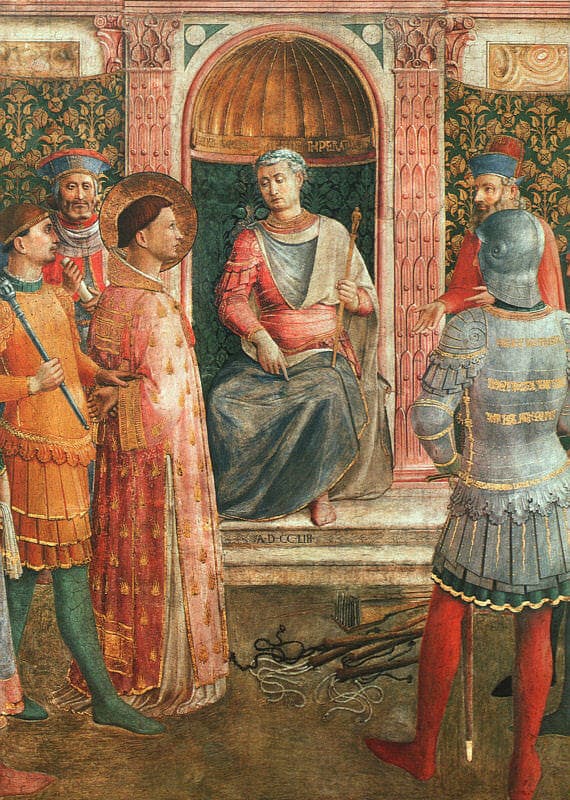
Lorenzo in front of Valeriano, detail of a fresco by Fra Angelico, c. 1447-50

Saint Lawrence handing over the Holy Chalice, in a capital of the Lonja Chica of Jaca Cathedral 12th century
The Holy Chalice in Spain
During the Muslim invasion, since 713 AD, it was hidden in the Pyrenees region, passing through Yebra, Siresa, Santa María de Sasabe (today San Adrián), Bailio and, finally, in the monastery of San Juan de la Peña (Huesca), where a document from the year 1071 mentions a precious stone chalice.
The relic was given in 1399 to the King of Aragon, Martin “the Human“, who kept it in the royal palace of La Aljafería in Zaragoza and then, until his death, in the Royal Palace of Barcelona in 1410, the Holy Chalice being mentioned in the inventory of his possessions 1.
1. Manuscript 136 of Martin “the Human“. Archive of the Crown of Aragon. Barcelona, where the history of the sacred vessel is described.
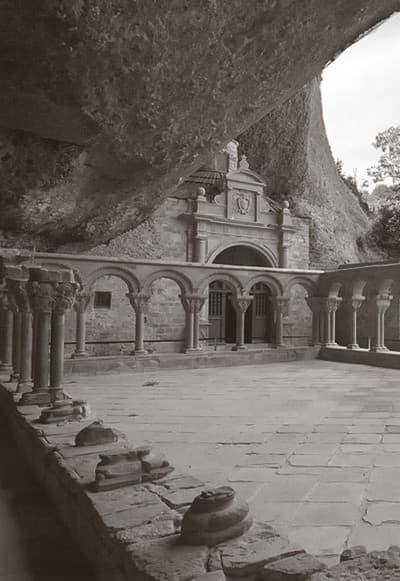
Cloister of the monastery of San Juan de la Peña.
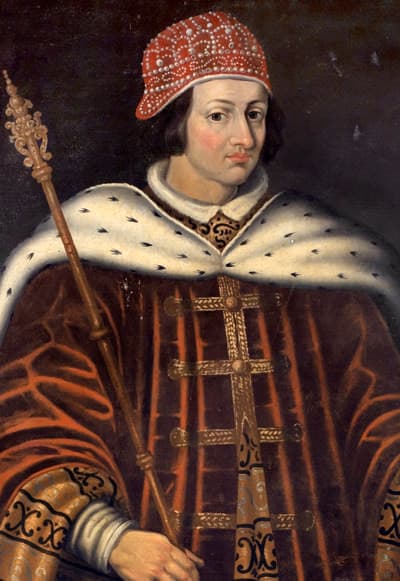
Detail of Martin I “the Human“, King of Aragon Oil on canvas.(1634)
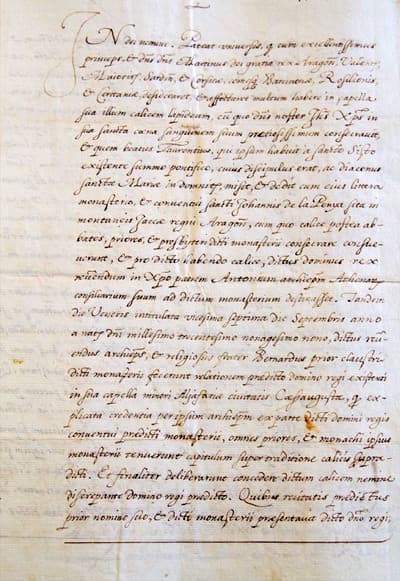
Copy of the document from the Archive of the Crown of Aragon in which Martin I “the Human“ receives the Holy Chalice.
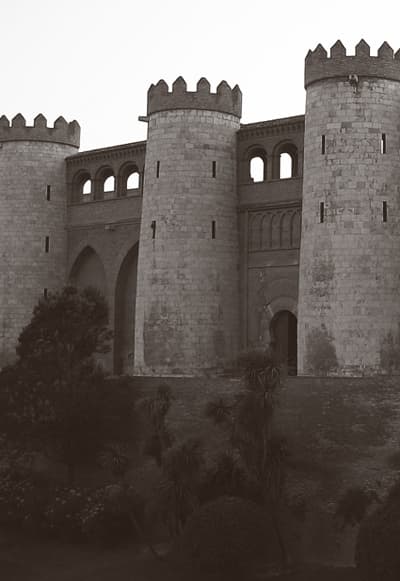
Royal Palace of La Aljafería in Zaragoza.
Around 1424, Don Martin's second successor, King Alfonso V the Magnanimous, took the royal reliquary to the palace of Valencia, and on the occasion of this King's stay in Naples, it was given with the other royal relics to the Cathedral of Valencia in the year 1437 2.
2. Volume 3.532, fol. 36 v. From the Cathedral Archives.
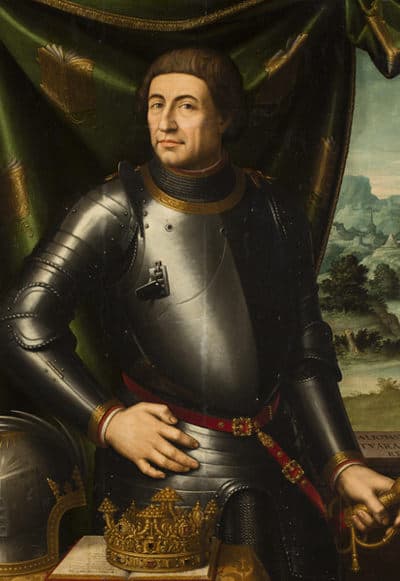
Portrait of the monarch Alfonso V, by Juan de Juanes, (1557, oil on panel, Museum of Saragossa, Zaragoza)
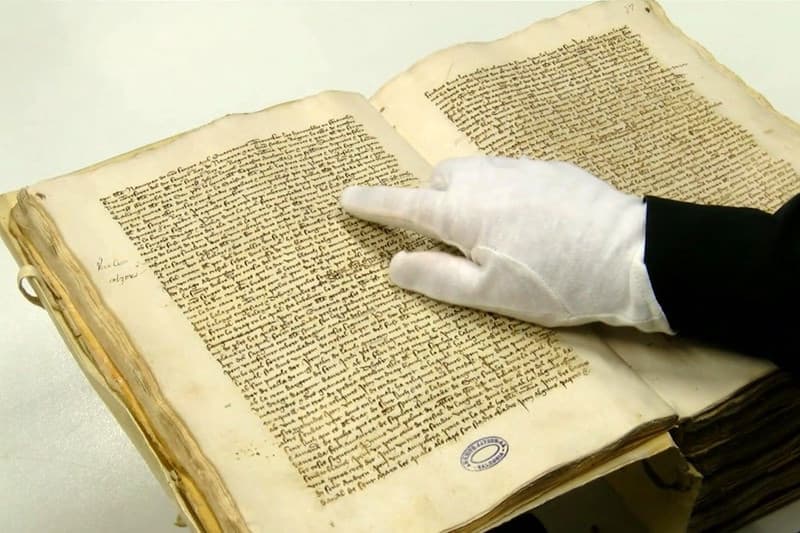
Inventory of the relics of the royal reliquary of the Crown of Aragon, deposited by Alfonso the Magnanimous in Valencia Cathedral in 1437. Archive of Valencia Cathedral
In Valencia Cathedral
It was preserved and venerated for centuries among the relics of the Cathedral, and until the 18th century it was used to contain the consecrated form in the Holy Thursday “monument”.
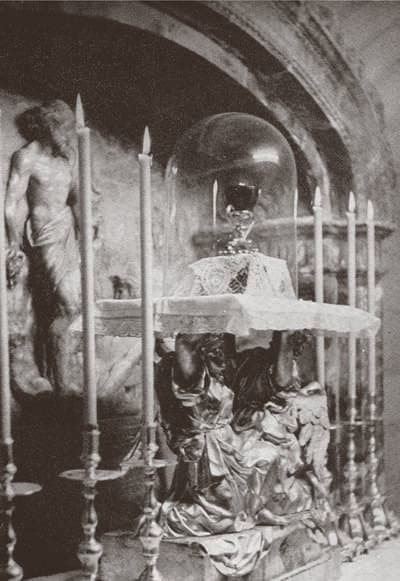
The Holy Chalice exposed in the Chapel of the Resurrection.
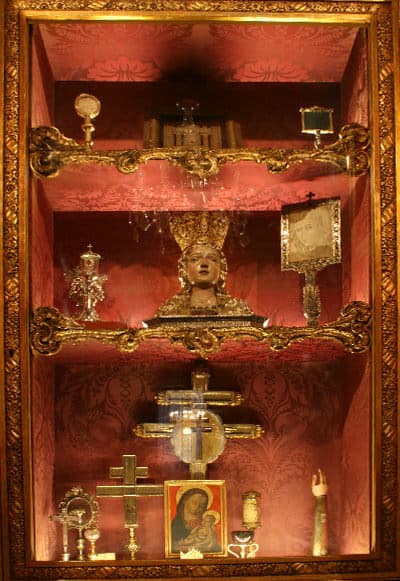
The cabinet of relics where it was kept in the Chapel of relics.
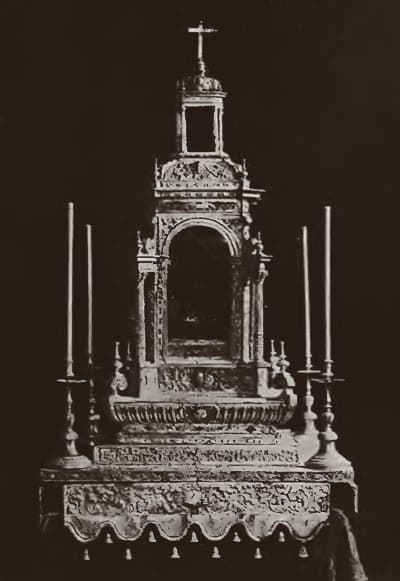
Tabernacle – Exhibitor (disappeared during the civil war)
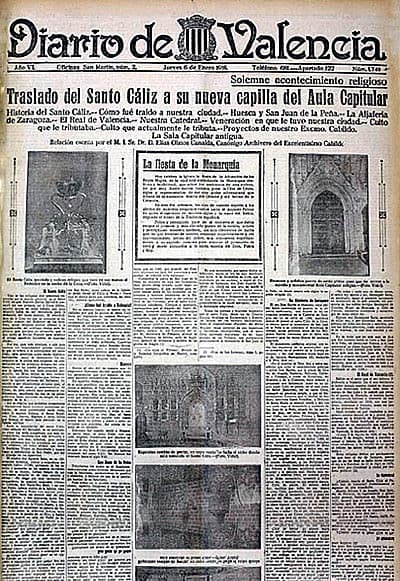
Newspaper announcing the decision to relocate and exhibit the Cup.
In 1916 it was finally installed in the Chapterhouse, which was fitted out as the Chapel of the Holy Chalice. It was precisely this permanent public exhibition of the sacred relic that made it possible to spread knowledge of it, which was very limited while it remained reserved in the cathedral's reliquary.
Two «exiles»
During the War of Independence, between 1809 and 1813, the chalice was taken to Alicante, Ibiza and Palma de Mallorca, fleeing the rapacity of the Napoleonic invaders, and during the Civil War (1936-1939) it remained hidden in the village of Carlet.

On the base destroyed on 21 July 1936 in the assault on the Cathedral.

Wall in the Casa del Carlet where the chalice was hidden between 1937 and 1939.
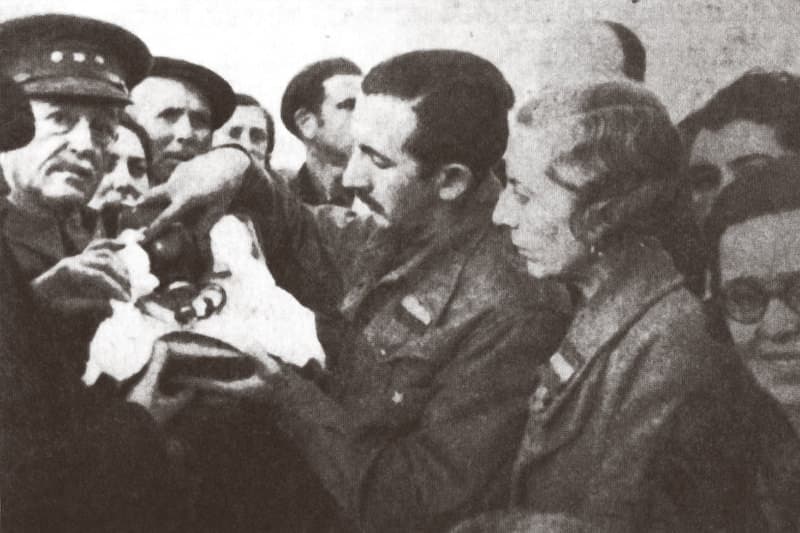
On 30 March 1939, the Holy Chalice was able to return to the Cathedral at the end of the Civil War.
Nowadays
Blessed John XXIII granted plenary indulgence on his annual feast day, Pope John Paul II celebrated the Eucharist with the Holy Chalice during his visit to Valencia on 8 November 1982.
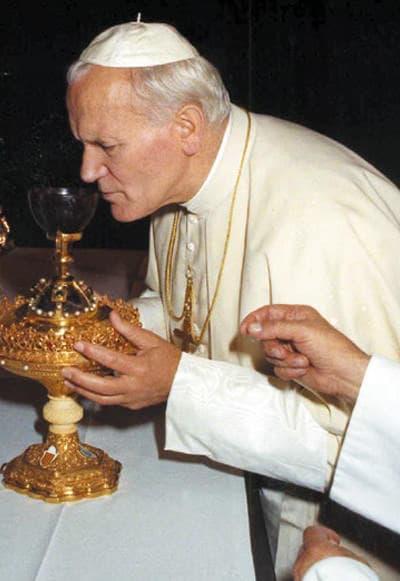
Pope John Paul II, with the Holy Chalice (1982)
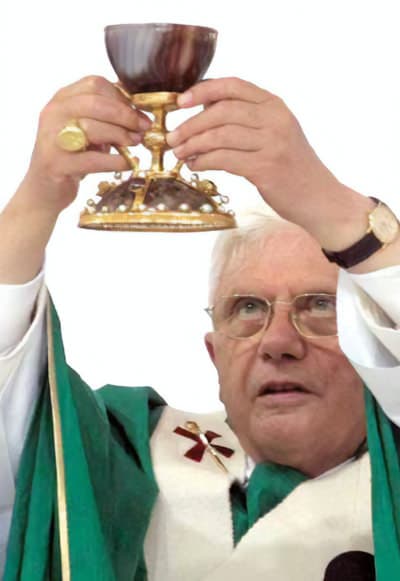
Pope Benedict XVI, with the Holy Chalice (2006)
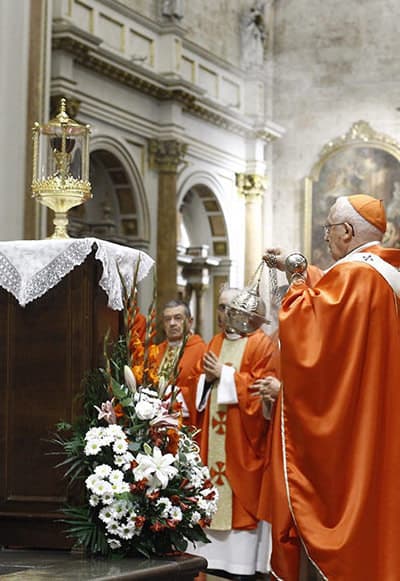
Cardinal Cañizares with the Holy Chalice (2015)
The same happened with His Holiness Benedict XVI who celebrated the Eucharist on the occasion of the 5th World Meeting of Families on 8 July 2006; finally, Pope Francis granted the celebration of a Eucharistic Jubilee Year in honour of the Holy Chalice every five years starting in 2015.